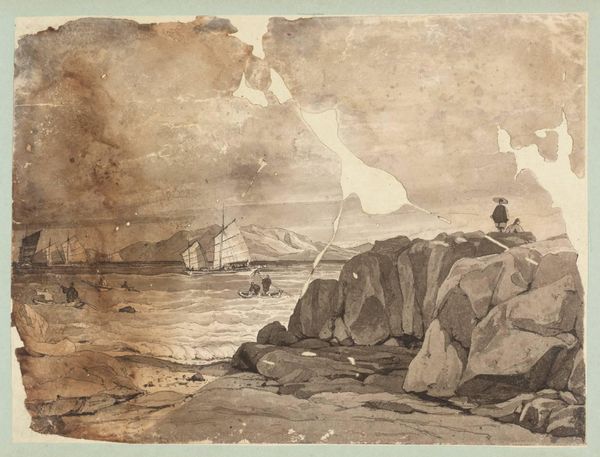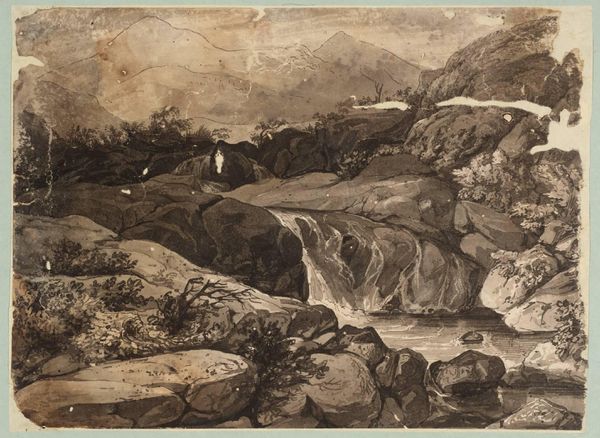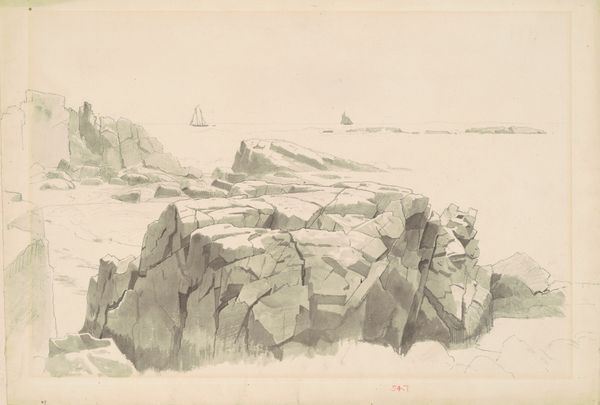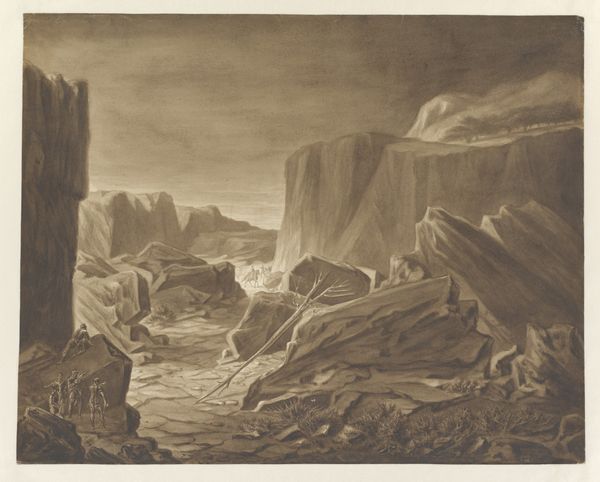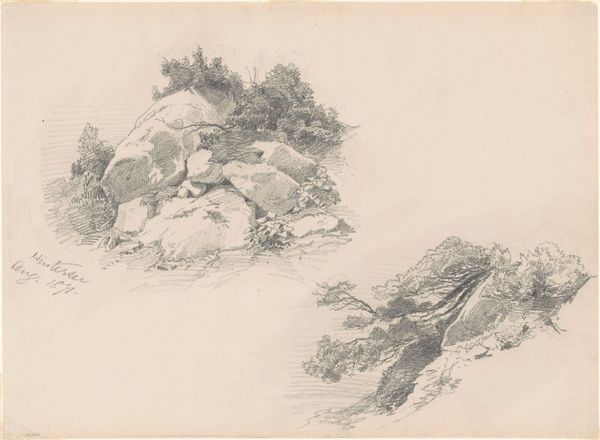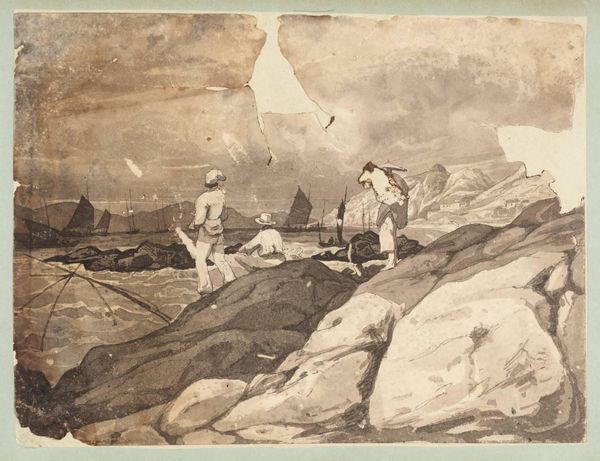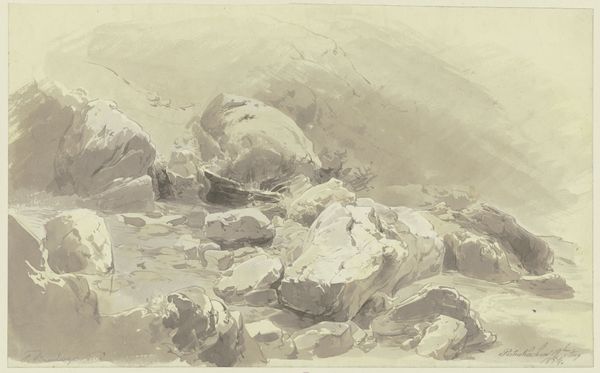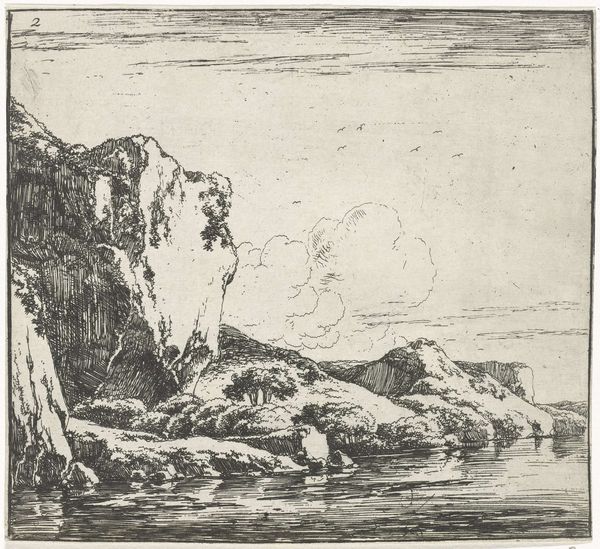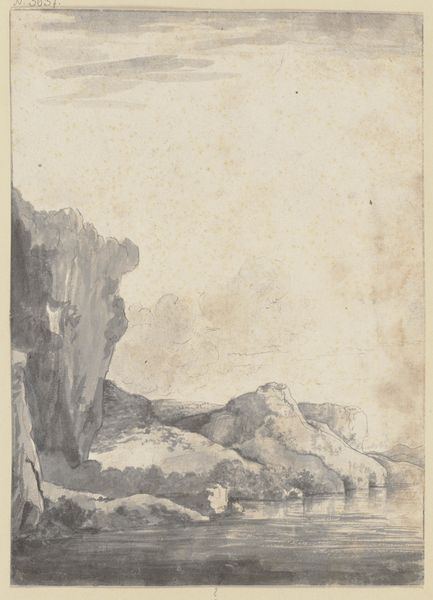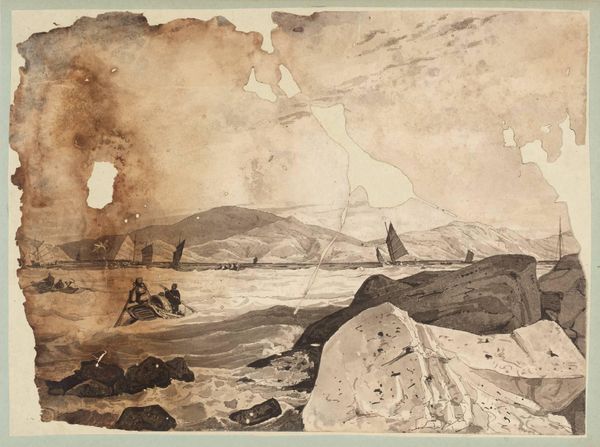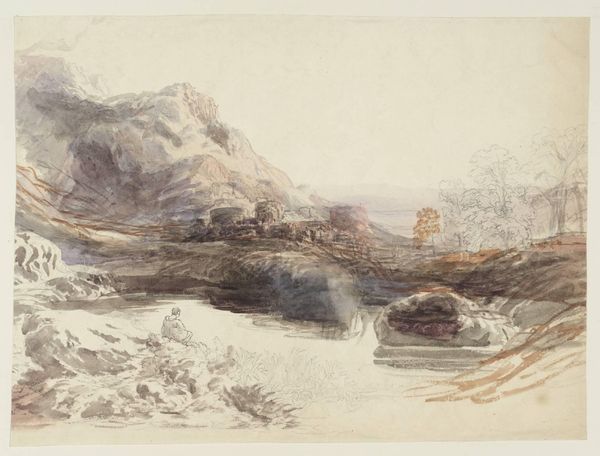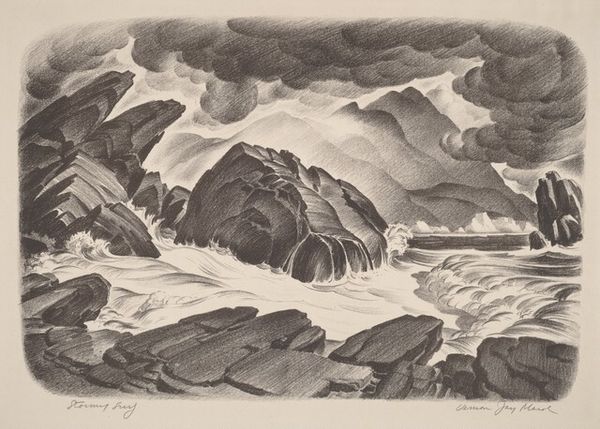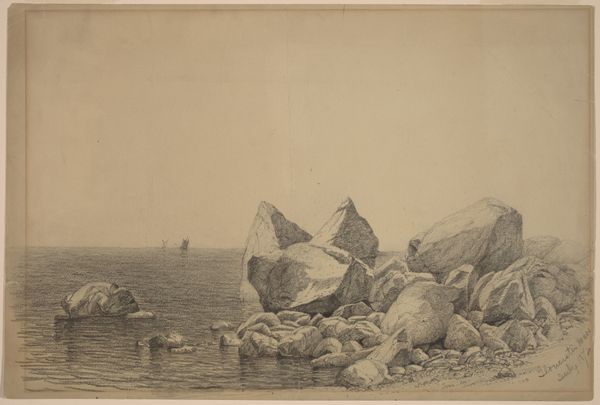![[title not known] by George Chinnery](/_next/image?url=https%3A%2F%2Fd2w8kbdekdi1gv.cloudfront.net%2FeyJidWNrZXQiOiAiYXJ0ZXJhLWltYWdlcy1idWNrZXQiLCAia2V5IjogImFydHdvcmtzL2EyYjRjNWNiLTU3MmEtNGU2Ni1hNTkxLWRmYjNiOWJjODJjNi9hMmI0YzVjYi01NzJhLTRlNjYtYTU5MS1kZmIzYjliYzgyYzZfZnVsbC5qcGciLCAiZWRpdHMiOiB7InJlc2l6ZSI6IHsid2lkdGgiOiAxOTIwLCAiaGVpZ2h0IjogMTkyMCwgImZpdCI6ICJpbnNpZGUifX19&w=3840&q=75)
Dimensions: support: 210 x 292 mm
Copyright: CC-BY-NC-ND 4.0 DEED, Photo: Tate
Curator: This wash drawing, made by George Chinnery in the early 19th century, depicts a coastal scene, likely in Macau or Southern China. I'm immediately struck by how the composition is built around these weighty, monumental rocks. Editor: The rocks definitely dominate the foreground, framing the ocean and distant shore. It feels…isolated, perhaps, though there are figures on the beach, hinting at colonial presence. Considering Chinnery lived and worked in India and China during the height of British imperialism, I wonder about the socio-political context. Curator: Absolutely. Chinnery was producing these works for a specific market, primarily British merchants and officials. The materiality of the drawing itself—the paper, the ink—speaks to trade routes and the availability of materials within that colonial network. Editor: And the subject matter! This isn’t just a neutral landscape. It's a portrayal of a space undergoing transformation through colonial influence. The figures on the beach...are they tourists, traders, or locals forced to labor? It raises questions about power dynamics and representation. Curator: It’s fascinating to consider the labor involved not just in the making of the drawing but in the scene itself. The extraction of resources, the movement of goods. Editor: Yes. This sketch is seemingly quiet, but it silently echoes with the complexities of a specific historical and political moment. Curator: Precisely. It pushes us to see the artistic process as intertwined with broader economic and social forces. Editor: It truly reminds us that art is never created in a vacuum.
